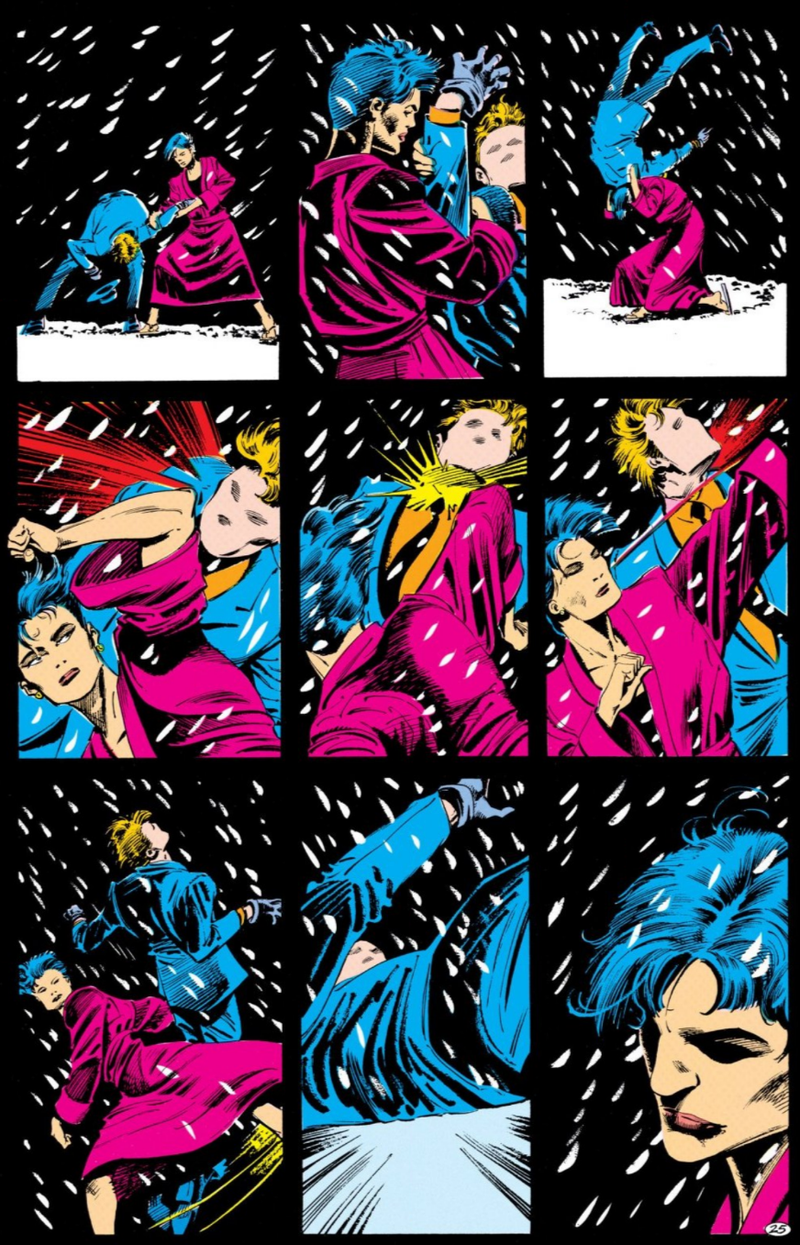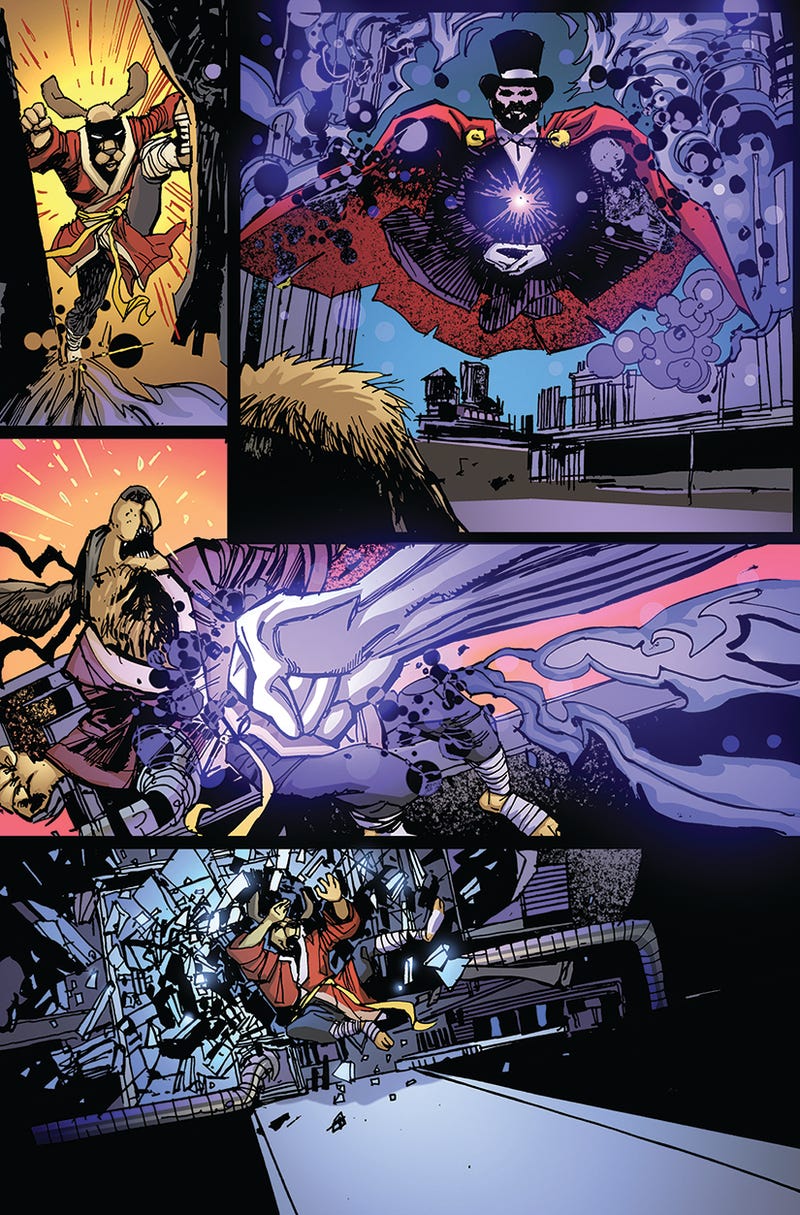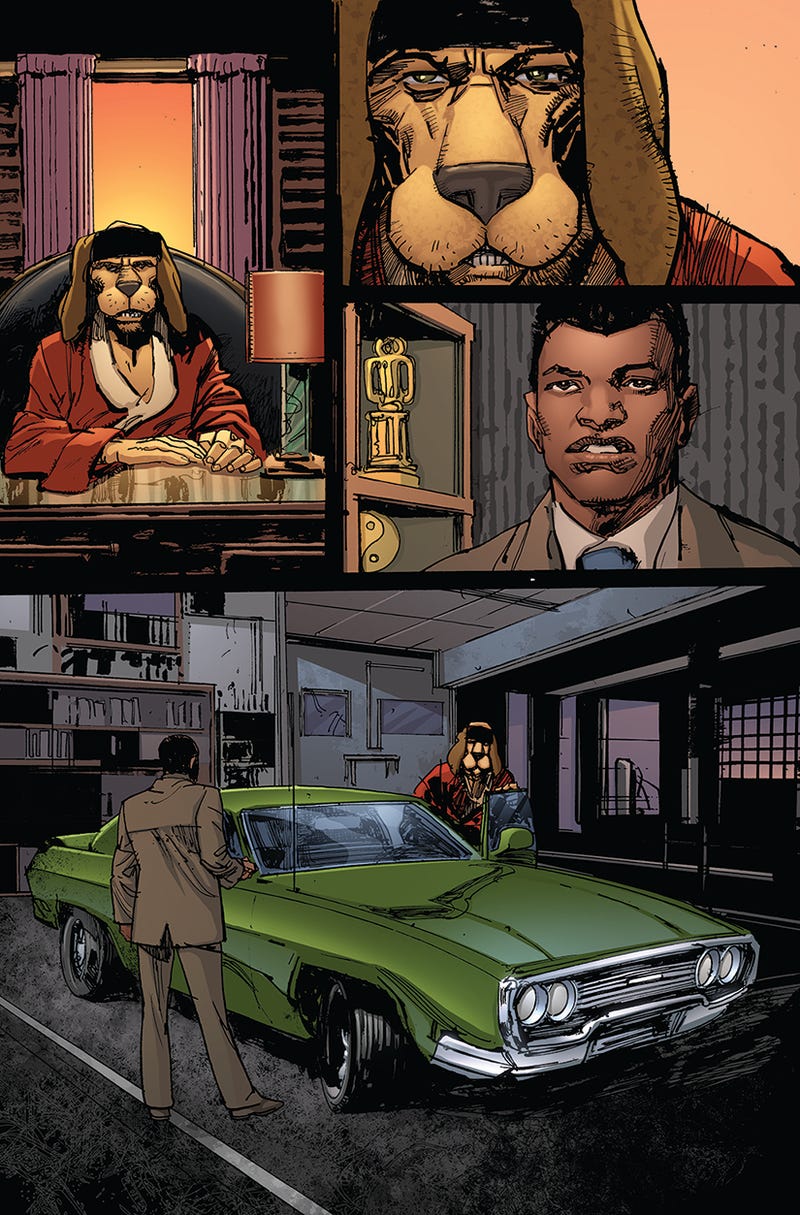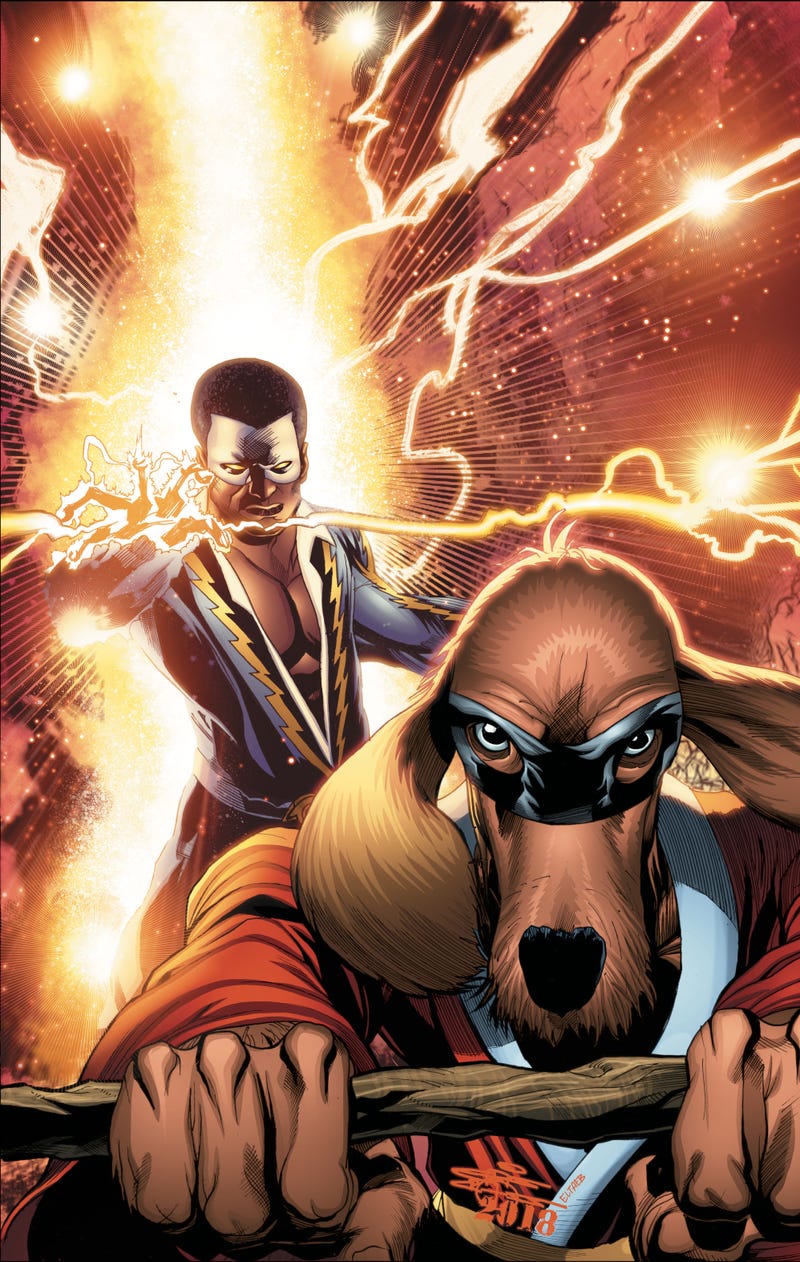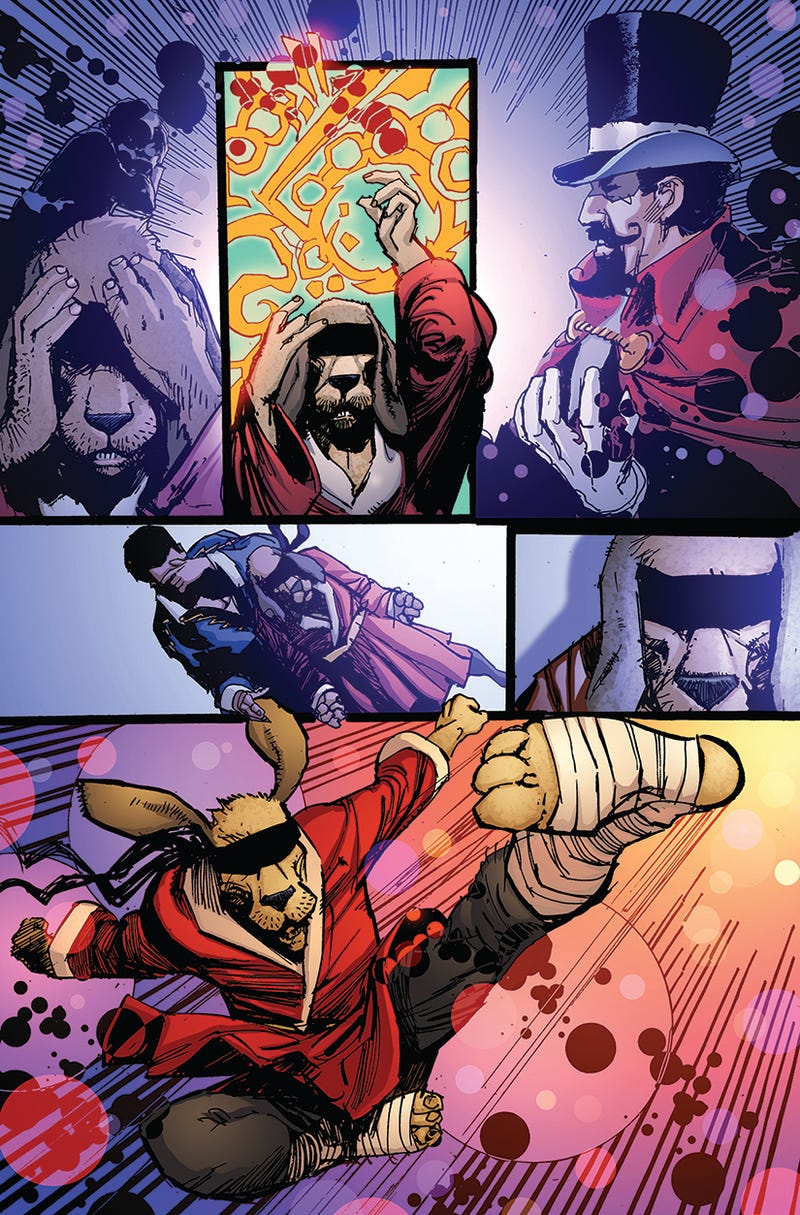COMICS
The Black Lightning/Hong Kong Phooey Comic Crossover Will Be the 'Bruce Lee Story You Were Dying to See'
Evan Narcisse
Today 1:00pm
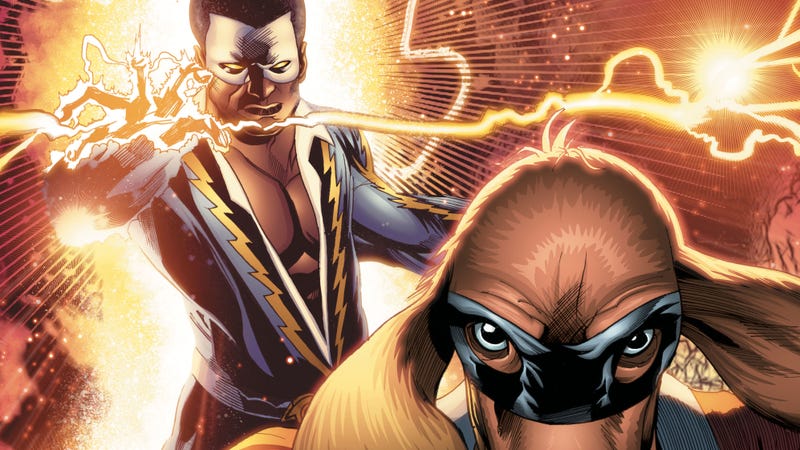
Detail from the variant cover for Black Lightning/Hong Kong Phooey Special #1
Image: ChrisCross, Gabe Eltaeb (DC Comics)
DC Comics has won lots of acclaim for how it’s wildly reimagined iconic Hanna-Barbera characters over the last few years, including crossovers like Batman/Elmer Fudd or Green Lantern/Space Ghost. One upcoming team-up will pair heroes from the decade of bell-bottom pants, but don’t dare think that Black Lightning/Hong Kong Phooey will be a laughing matter.
Written by Bryan Hill, Black Lightning/Hong Kong Phooey comes out on May 30. It’s pencilled by Denys Cowan, inked by Bill Sienkiewicz, colored by Jeromy Cox, and lettered by Janice Chiang. A 40-year veteran of the comics and animation industries, Cowan is known for his dramatic, angular compositions and for being a co-founder of multicultural Milestone Media, where he co-created characters like Hardware and Static. Hill writes for comics, TV, and movies, including Michael Cray, Ash vs. Evil Dead, the Titans TV show, and an upcoming turn on Detective Comics.
When I spoke to Hill and Cowan on the phone last week, they discussed approaching the Black Lightning/Hong Kong Phooey project with a straight-up serious tone, despite the fact that there’ve been comedic interpretations of each character out in the world.
In the interview that follows, the two creators talk about what it’s like tackling one of DC’s major black heroes across two eras and their mutual love for the martial arts.
io9: There’s a huge tonal difference between these characters. Especially if we’re talking about the 1970s iteration of Black Lightning, who was an angrier character in that ghetto-avenger mode. Hong Kong Phooey was a goofy action cartoon character. So, is this project going to make Black Lightning more goofy, or Hong Kong Phooey more angry?
Denys Cowan: Oh, that’s interesting.
Bryan Edward Hill: I think, neither. Honestly, in order to answer this question, I need to explain a little more about my relationship to Hong Kong Phooey. So, about maybe eight years ago, I pitched a take on Hong Kong Phooey that was a fairly serious take on the character where he was this martial artist/talking dog in a world of normal people. And it had like a Shane Black/Lethal Weapon tone, because people were looking for, “What are we going to do with these Hanna-Barbera things?”
This was back in the day before they were kind of doing various projects, sort of trying to figure out how to update these cartoons. I was way ahead of my time. So, I came in, “What if the Shaw Brothers and Tarantino were to do Hong Kong Phooey?” And that got me the meeting. And then I came in and pitched it, and they were like, “Oh that’s awesome, but we can’t do that.”
Cowan: Hey, we knew we couldn’t do it when we called Jim [Lee]. He wanted to meet you.
Hill: So I was working with [DC editor] Marie Javins, who’s great, over on Michael Cray and she was also editing the Hanna-Barbera stuff at the time. And Denys was doing covers for lots of different things. I was already stoked [when his name came up], because I had grown up on Denys’ work when I was a kid, man. I read [his] Question miniseries probably every six months. And the weirdest thing about comics is you end up working with your heroes way sooner than you think you should. It’s like jumping into a movie and suddenly Scorsese is producing your first feature. Comics is crazy.
Cowan: Make sure that gets in the interview. He says I’m like Scorcese.
Hill: So, to answer your question, I was working with Marie on Michael Cray. She asked me if I was interested in Hanna-Barbera stuff, because I was talking to her about that really, really great Tom King Batman/Elmer Fudd issue. That was dope. And she was like, “Well, what would you be interested in?” And I said, “Hong Kong Phooey!” And then she looks at me and was like, “Really?” Out of all the characters, they assumed that was one nobody wanted to do.
I happened to have this really great take on Hong Kong Phooey—so, she kind of put it in her back pocket. Eventually [editor] Jim Chadwick, who’s also awesome, came around and was like, “Hey, Bryan. What’s that Hong Kong Phooey thing? I think we might be able to get Denys interested in doing it.” And I was like, you mean I can work with Denys Cowan on storytelling, on panels? Yeah!
So, they asked me if I could put Black Lightning in it. I turned in a pitch to them. Met with [DC Entertainment Co-Publisher] Dan DiDio about it. And when I met with Dan, he had a kung fu movie on in his office. I don’t remember what it was but it was a deep cut.
That sounds like a real good omen.
Hill: It was! Dan was super friendly and actually pushed me to make it more absurd. What I turned in at first was a little muted, and he was like, “No, I can see that you have a story you’re a little scared of telling me about. But I want you to tell me that story. I can smell it on you. Give me that story.” So, then I re-pitched him the Shaw Brothers version of the thing that was really in my heart. Dan liked it and shared it with Denys. Denys can talk about how he came on to it but I was just elated with the process.
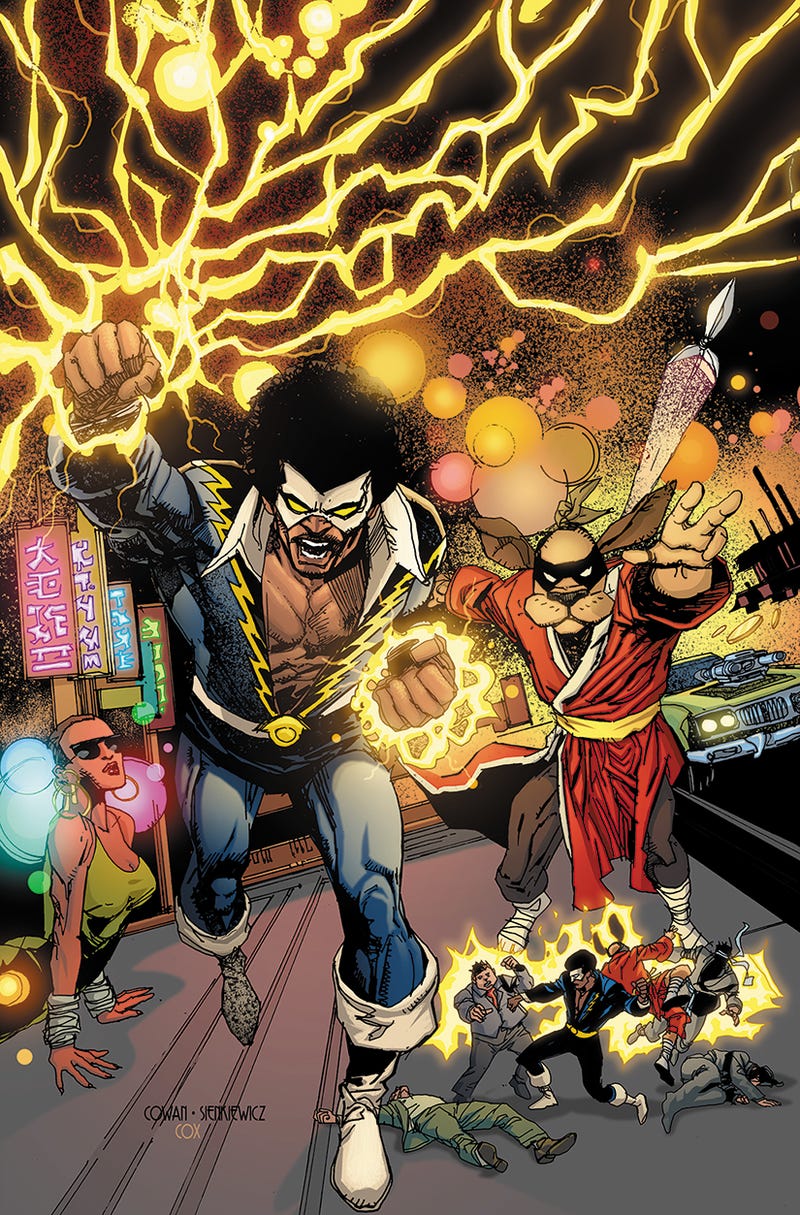
The main cover for Black Lightning/Hong Kong Phooey Special #1.
Image: Denys Cowan, Bill Sienkiewicz, Jeromy Cox (DC Comics)
Cowan: Well, when I heard about the project for the first time, Dan DiDio and I went to lunch. We’re just sitting around talking about different projects that I wanted to do then he says, “I got something I want you to do... are you ready for this?” I said, yeah, I’m ready. He goes... Black Lightning/Hong Kong Phooey.”
I just stared at him for a long time, I think. I just kind of looked at him and I blinked. I said, “What did you just say to me?” He goes, “Black Lightning and Hong Kong Phooey.” I said, “Dan… what is that?” And he said, “It’s the best story ever. You gotta do it. “ Dan, what is Black Lightning/Hong Kong Phooey? Is this the same Hong Kong Phooey as that cartoon dog?” Scatman Crothers did the voice? And is this Black Lightning with the afro wig? He said, “Yeah! That Black Lightning!” So I’m like, “What in the world...”
You’ve been doing really hard-edged stuff like covers and interiors for the Priest run on Deathstroke. This probably sounded like the polar opposite.
Cowan: Yeah, right? It’s like, what do you take me for? Are you talking to me? I’m, like, Mister Black Power in comics. [laughs] Why are you talking to me about Black Lightning/Hong Kong Phooey? This ain’t good for my image.
So, he told me, I said, “Look—this is a totally true story—I said, “Dan, I’m not drawing Black Lightning. Is Black Lightning’s name Static Shock? Cause if his name is Static Shock, I’d be happy to draw Static Shock/Hong Kong Phooey.” He said, “No, that’s not going to happen right now. Let’s just talk about Black Lightning.” Ultimately, how he pitched it to me and got me to read it—because I didn’t understand what he wanted me to do with this material—was to say “This is the Bruce Lee story you were dying to see that he never got to make.”
I was like, “Whoa. What?” This is that story. “You know that sixth movie he should have made? This is it.” I’m like, “Holy ****, now I’ve got to read this thing.” So, I read it, and I’m like... “Wow, this is like a ‘70s kung fu movie. And Hong Kong Phooey is Bruce Lee...” And Black Lightning is Jim Kelly, but hyped. I can do this book.
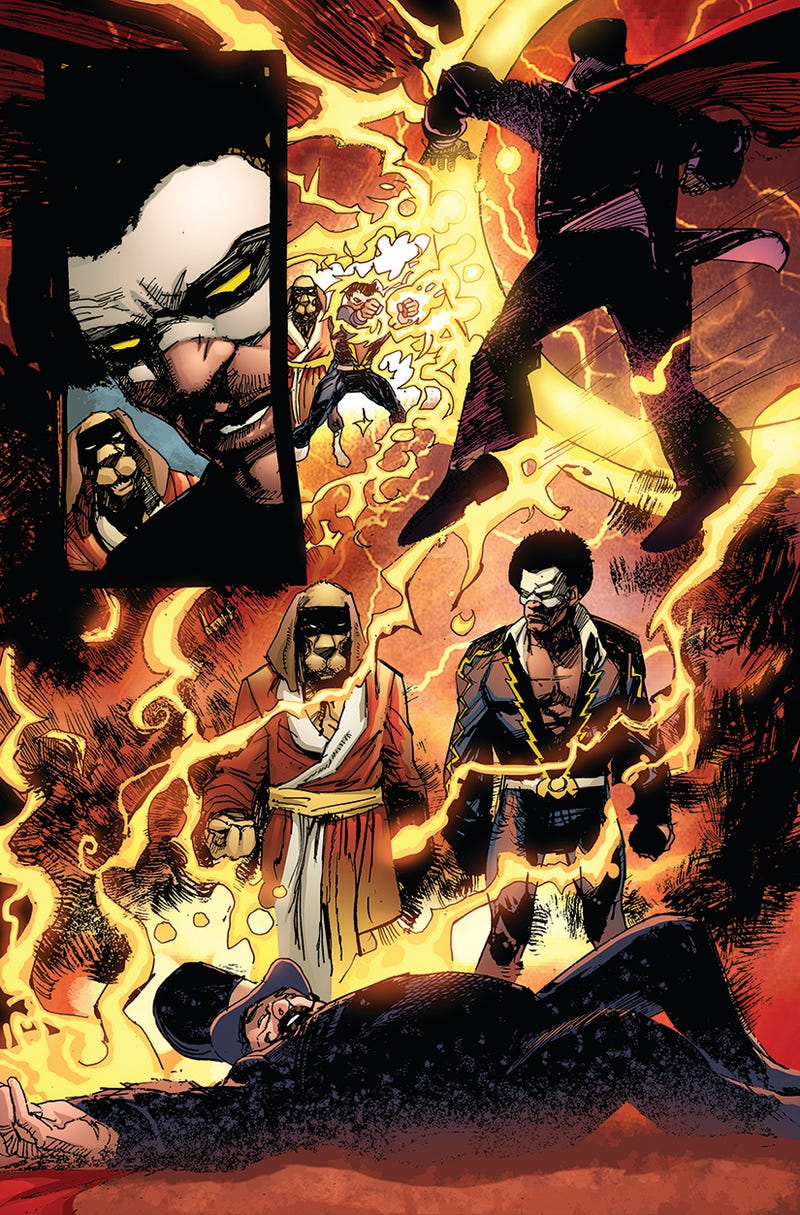
Two superheroes who aren’t afraid to show beef cleavage.
Image: Denys Cowan, Bill Sienkiewicz, Jeromy Cox (DC Comics)




 Reply With Quote
Reply With Quote









